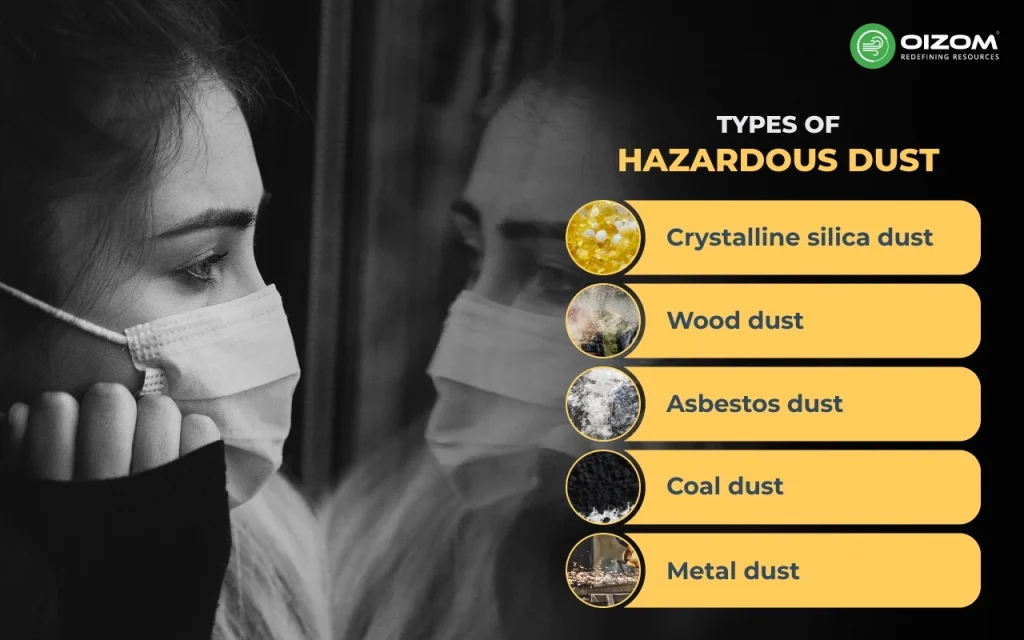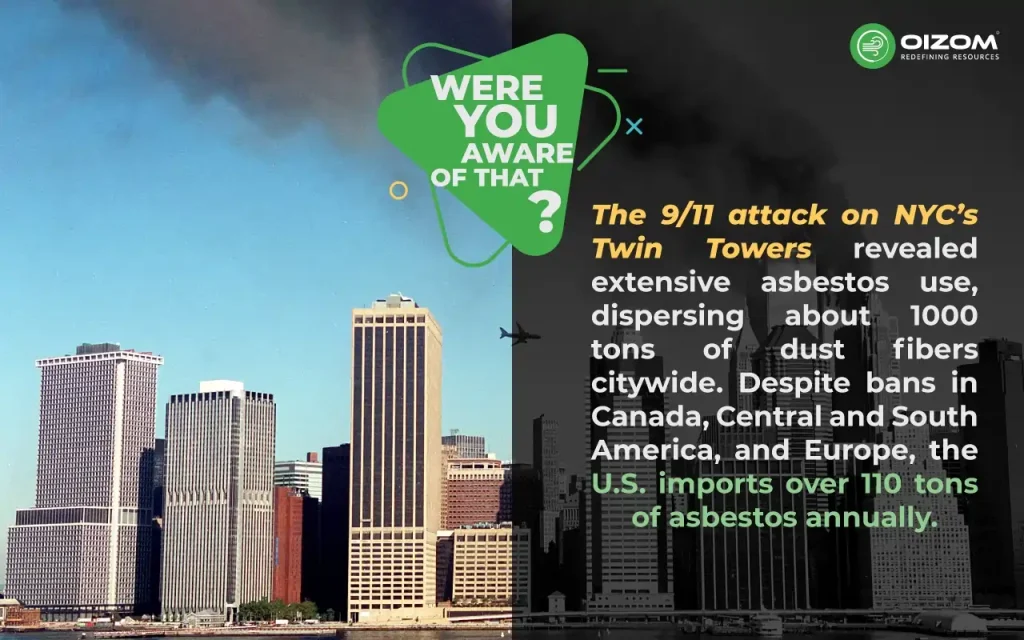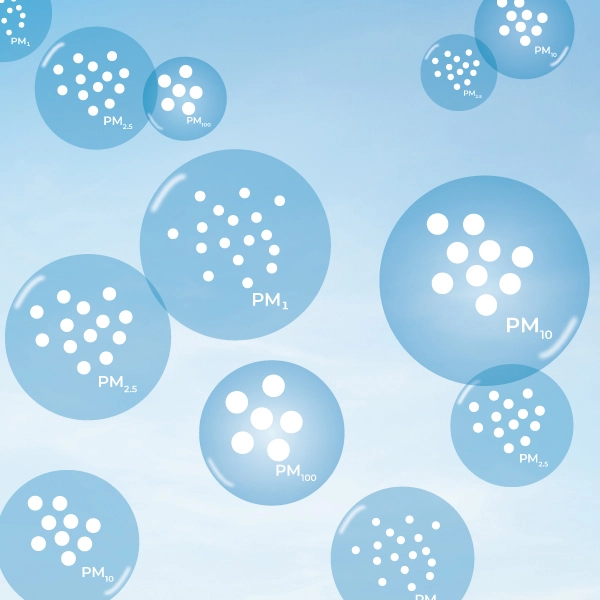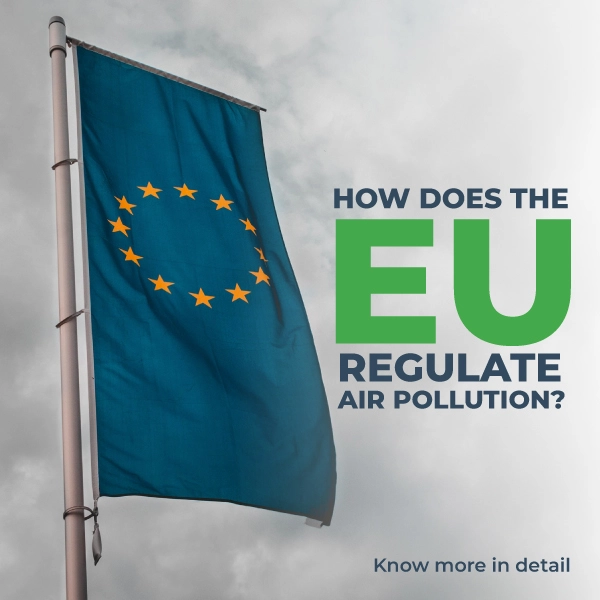Dust is everywhere! You dust your home or office one day, and the next, you notice that fine particle of dust sparkling in the sun! It’s bothersome, but it also carries more significant risks. First off, not all dust is created equal. Dust particles vary in size, chemistry, and reactivity. Depending on where it comes from, dust can be a mix of inorganic or organic materials. This blog will provide in-depth knowledge about the types of hazardous dust and their harmful effects on health. It will also provide information on preventing exposure to hazardous dust.
Types of Hazardous Dust

“Dusts are solid particles, ranging in size from below 1 µm (micrometer) up to at least 100 µm suspended in the atmosphere and carried by the wind. While these tiny airborne particles appear harmless, they seriously threaten human and environmental health, transportation safety, and the global economy. These minuscule particles, usually invisible to the naked eye, carry harmful substances, including silica, coal dust, asbestos fibers, and various metallic compounds.
Dust is microscopic solid particles that are dispersed or floating in the air. Depending on the source, dust particles might be inorganic or organic. Dust is not a singular entity but a diverse category comprising various particles, each with unique properties and health implications. In this section, we explore the primary types of hazardous dust, such as silica, coal, asbestos, and metal dust, and the health risks associated with each.
Crystalline silica dust
Crystalline silica dust is produced by drilling, blasting, crushing, filtration, and transporting silica-containing rock materials in the mining, quarrying, and tunneling industries. Quartz is the most frequent type of crystalline silica in nature. Quartz is found in both alpha and beta forms. The most prevalent type is alpha quartz in various rocks and soils. Silica is the primary component of sand; therefore, abrasive makers, glass workers, stone cutters, and sandblasters are all exposed to it. Silica is a chemical substance found in abundance throughout nature. Quartz, a mineral found in rocks, accounts for 90-95% of sand. High levels of respirable crystalline silica dust cause silicosis, a lung illness that can result in severe breathing difficulties, lung cancer, and death.
There are three forms of silicosis: chronic, accelerated, and acute. Chronic silicosis is caused by prolonged exposure to low levels of silica dust. Accelerated silicosis develops after exposure to higher levels of silica over a shorter period. Acute silicosis is caused by short-term exposure to extremely high concentrations of silica. Silicosis raises the risk of developing tuberculosis, chronic obstructive lung disease, kidney disease, and autoimmune illness.
Wood dust
Wood dust, a seemingly innocuous byproduct of woodworking, is of significant environmental and industrial importance. It is predominantly generated in the woodworking and manufacturing industries. Wood dust is a collection of small-sized dust particles generated during cutting, sewing, and polishing wood from machinery and equipment.
This delicate particulate matter impacts the air quality and poses health risks to those exposed. Common side effects include irritation of the eyes, nose, and throat, shortness of breath, dry throat, runny eyes, rhinitis, dermatitis, and more significant respiratory system problems. Continued exposure can cause diminished lung capacity, allergic responses, and occupational asthma.
Asbestos dust
Asbestos dust is especially harmful to health. Asbestos is a naturally occurring mineral of versatile, soft, heat-resistant fibers. There are three varieties of asbestos: brown asbestos (amosite), blue asbestos (crocidolite), and white asbestos (chrysotile). Asbestos may be found in large deposits or as contaminants in other minerals such as talc and vermiculite. They are all naturally occurring minerals, primarily magnesium silicate. When heated, they fluff up into a fibrous material that can be woven into cloth, combined with cement to make sheets, or used as insulation. It is refractory, and it will prevent fires.

Coal dust
Coal mining produces coal dust, whether underground or on the surface. Dust is present in the atmosphere wherever coal is mined, stacked, and loaded into a train or truck for shipment. In addition to the miners, those who add coal to the stockpile and remove it for loading are also exposed to health concerns.
Coal is classified into several types: bituminous, subbituminous, anthracite, and lignite. Coal dust exposure can cause coal workers’ pneumoconiosis, sometimes known as “black lung” illness, a dangerous breathing condition. Australia is known to have bituminous and lignite coal types.
Safety standards limit exposure to coal dust, but some also contain silica. Modern machinery pulverizes coal and the surrounding rock, exposing workers to coal and silica dust.
Metal dust
Metalliferous dust is produced during surface and underground mining for iron ore, copper, tin, nickel, gold, silver, and zinc. Inhalable and respirable dust in metalliferous mining is formed from mining processes such as drilling, extraction, crushing, hauling, stockpiling, and mineral processing. Some metalliferous ores, such as uranium, silver, and nickel, include hazardous dusts that cause chemical reactions within the respiratory systems or allow chemicals to be taken into the bloodstream via the alveolar walls. Poisonous to body tissue and several organs, it can cause serious inflammation of the lungs.
The toxic elements can be released mainly through mining activities, but copper and zinc also have a serious impact. Metalliferous mine dust containing uranium and transition metals such as copper, nickel, and zinc can produce reactive oxygen species in biological tissues through Fenton-type reactions. Furthermore, iron-bearing materials like iron oxides may contribute to inflammation in the human lung.
Health Effects of Hazardous Dust
Dust in industrial zones can cause substantial health and safety dangers to employees. Manufacturing factories, processing facilities, and industrial sites all have the potential to emit dangerous dust. If toxic dust accumulates or is disseminated in the air, it can damage employees’ health. Toxic dust can cause respiratory problems, and hazardous materials can even pose a risk of fire and explosion.
Different types of dust pose different threats to human health and are divided into three categories: L Class (Low Risk), M Class (Medium Risk), and H Class. Each class has a maximum allowed concentration, which employers must understand.
Respiratory problems
The health consequences go far beyond raising the risk of asthma and cancer. This alone is likely to make anyone reconsider working in a dust-filled atmosphere. According to government estimates, more than 500 UK workers die each year as a result of silica dust exposure. Inhaling this dust causes silicosis, where a person’s lungs harden, resulting in shortness of breath. Despite their previous fitness level, somebody with silicosis could even struggle to climb stairs.
Cancer
Exposure to hazardous dust can result in a spectrum of health problems, including severe lung diseases (silicosis, pneumoconiosis, mesothelioma) and various forms of cancer.
- Silica dust is harmful when inhaled into your lungs. As it is 100 times smaller than a grain of sand, you can breathe it in without knowing.
- Exposure to silica dust can lead to the development of lung cancer, silicosis (an irreversible scarring and stiffening of the lungs), kidney disease, and chronic obstructive pulmonary disease.
According to IARC, there is sufficient evidence that asbestos causes mesothelioma (a relatively rare cancer of the thin membranes that line the chest and abdomen) and cancers of the lung, larynx, and ovary. It is thought that most mesotheliomas are due to asbestos exposure. There is limited evidence that asbestos exposure is linked to increased risks of cancers of the stomach, pharynx, and colorectum.
Other health problems
There is more evidence of long-term health impacts from PM2.5 collected particles, including ultrafine particles. Dust particles small enough to be inhaled may lead to:
- Irritation of the eyes
- coughing
- sneezing
- hay fever
- asthma attacks.
For people with respiratory conditions like asthma, chronic obstructive airway disease (COAD), or emphysema, even small dust concentration increases can worsen their symptoms.
Prevention of exposure to Hazardous Dust
To prevent and control exposure to hazardous dust, it is recommended to adopt a comprehensive approach that includes:
- Assessing the Risk: Identifying activities that generate dust and evaluating their potential health risks.
- Controlling at the Source: Implementing measures to minimize dust generation, such as using wet processes or enclosing dust-producing operations.
- Using Engineering Controls: Installing local exhaust ventilation systems to capture and remove dust before it can spread to the workplace air.
- Applying Administrative Controls: Changing work practices and schedules to limit the duration and intensity of exposure to dust.
- Providing Personal Protective Equipment (PPE): When other controls cannot adequately reduce exposure, providing suitable respiratory protection to workers is necessary.
- Regular Monitoring and Risk Assessments: Regularly assessing the workplace for dust hazards and monitoring dust levels helps maintain compliance with occupational safety standards. With solutions like Oizom’s real-time air quality monitors, you don’t have to worry about classifying different types of particulate matter dust. The advanced dust monitor will give you data on all dust in the air, encouraging you to take smart mitigation actions.
Conclusion
As we conclude this comprehensive guide on types of hazardous dust, it’s clear that the silent threat posed by these minute particles is a complex and far-reaching issue that significantly impacts human health and the environment. Depending on the type of dust and hazards involved, you may need to take extra precautions. However, its impact can escalate to more severe conditions, including asthma, dermatitis, conjunctivitis, chronic obstructive pulmonary disease (COPD), and even nasal cancer following long-term exposure. Ultimately, the blog aims to promote safety and well-being by educating people about the dangers of hazardous dust and advocating for effective prevention strategies.
To control dust hazards:
- Eliminate or Substitute: Remove or replace the hazard.
- Engineering Controls: Implement dust suppression and ventilation systems.
- Administrative Controls: Adopt safer work practices and maintenance routines.
- Personal Protective Equipment (PPE): Use appropriate respiratory protection when necessary.
Hazardous dust areas are places where dust poses health, safety, or explosion risks, such as in manufacturing, woodworking, and areas with combustible or toxic dust like grain silos or construction sites handling silica.
To clean hazardous dust:
- Wet Cleaning: Bind dust with damp methods to prevent it from becoming airborne.
- HEPA Vacuuming: Use vacuums with HEPA filters to capture fine particles.
- Avoid Dry Methods: Do not use dry sweeping or air blowing that can spread dust.
- Wear PPE: Ensure cleaners wear protective gear, including masks.
- Proper Disposal: Securely dispose of dust and cleaning materials to avoid re-exposure.






